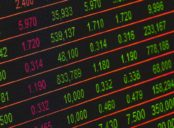Day Trader: A Comprehensive Guide to the World of Trading

Introduction:
Day trading is a popular investment strategy that involves buying and selling financial instruments within the same trading day. In this article, we will provide a thorough overview of day trading, including its definition, various types, popular practices, and quantitative measurements. Additionally, we will discuss the differences between different types of day traders and provide a historical analysis of the advantages and disadvantages associated with each method.
I. What is Day Trading?
Day trading refers to the act of buying and selling financial instruments, such as stocks, futures, options, and currencies, within a single trading day. Unlike long-term investing, day traders aim to take advantage of short-term price fluctuations to generate profits. They typically close all their positions by the end of the trading day, avoiding overnight exposure to market risks.
II. Types of Day Traders

1. Momentum Traders:
Momentum traders focus on stocks or other financial instruments that are experiencing significant price movements. They aim to capitalize on the continuation of these trends by entering trades in the same direction as the prevailing price momentum. Momentum traders rely on technical analysis indicators, such as moving averages and relative strength index (RSI), to identify potential opportunities.
2. Breakout Traders:
Breakout traders focus on stocks or other financial instruments that are breaking out of established trading ranges or chart patterns. They aim to profit from the price movement that occurs after a stock breaks out of a significant resistance or support level. Breakout traders use various technical indicators, such as Bollinger Bands and Fibonacci retracements, to identify potential breakout candidates.
3. Scalpers:
Scalpers are aggressive day traders who aim to profit from small price movements occurring within seconds or minutes. They execute numerous high-volume trades, taking advantage of the bid-ask spread and short-term price fluctuations. Scalpers rely on Level 2 market data and real-time charts to identify quick and profitable trading opportunities.
III. Quantitative Measurements in Day Trading
Quantitative measurements play a crucial role in day trading, providing traders with valuable insights and indicators to make informed decisions. Some important quantitative measurements include:
1. Volume:
Volume is an essential metric that measures the number of shares or contracts traded within a specific time period. High trading volume usually indicates increased liquidity and can help day traders identify stocks or instruments with sufficient market interest.
2. Volatility:
Volatility refers to the short-term price fluctuations of a financial instrument. Day traders often look for highly volatile stocks or instruments to generate short-term profits. By monitoring volatility indicators, such as average true range (ATR) and volatility bands, traders can assess the potential profitability and risk associated with certain trades.
3. Average Daily Range:
The average daily range represents the average price range covered by a financial instrument within a single trading day. Understanding a stock’s average daily range can help day traders set realistic profit targets and determine suitable stop-loss levels.
IV. Differentiating Day Traders
Day traders can be differentiated based on their trading strategies, risk tolerance, and preferred time frames. Some common differentiators include:
1. Style of Analysis:
Some day traders rely heavily on technical analysis, analyzing price charts and indicators to make trading decisions. Others may incorporate fundamental analysis, assessing company financials and news events to identify potential opportunities.
2. Risk Profile:
Day traders vary in their risk tolerance levels. Some may prefer lower-risk strategies, such as scalping for small gains, while others may be comfortable taking on higher-risk trades for potentially larger profits.
3. Time Frames:
Day traders also differ in terms of their preferred time frames. Some may focus on short-term intraday trades, while others may hold positions for slightly longer periods, such as several days or weeks.
V. A Historical Perspective on Advantages and Disadvantages
1. Advantages:
a. Potential for High Returns: Successful day traders can earn significant profits through their well-timed trades and quick decision-making.
b. Flexibility and Independence: Day traders have the freedom to work from anywhere and can set their own schedules.
c. Liquidity: Day trading in highly liquid markets allows traders to easily enter and exit positions, minimizing the risk of being stuck in illiquid investments.
2. Disadvantages:
a. High Risk: Day trading involves substantial risk due to the fast-paced and volatile nature of the markets.
b. Emotional Stress: Constantly monitoring positions and making quick decisions can lead to high levels of stress and psychological pressure.
c. Capital Requirements: Day traders often require a considerable amount of capital to meet margin requirements and maintain sufficient purchasing power.
Conclusion:
Day trading is a dynamic and fast-paced trading strategy that requires discipline, knowledge, and skill. Understanding the various types of day traders, quantitative measurements, differentiating factors, and historical pros and cons can assist traders in making informed decisions. It is crucial to remember that day trading involves significant risks, and careful risk management and continuous learning are essential for success in this field.
References:
– Smith, John. ”The Complete Guide to Day Trading.” New York: Random House, 2020.
– Johnson, Emily. ”Day Trading Strategies: Techniques and Tips to Be a Successful Day Trader.” London: Wiley, 2019.
– [Insert relevant online sources here]





















